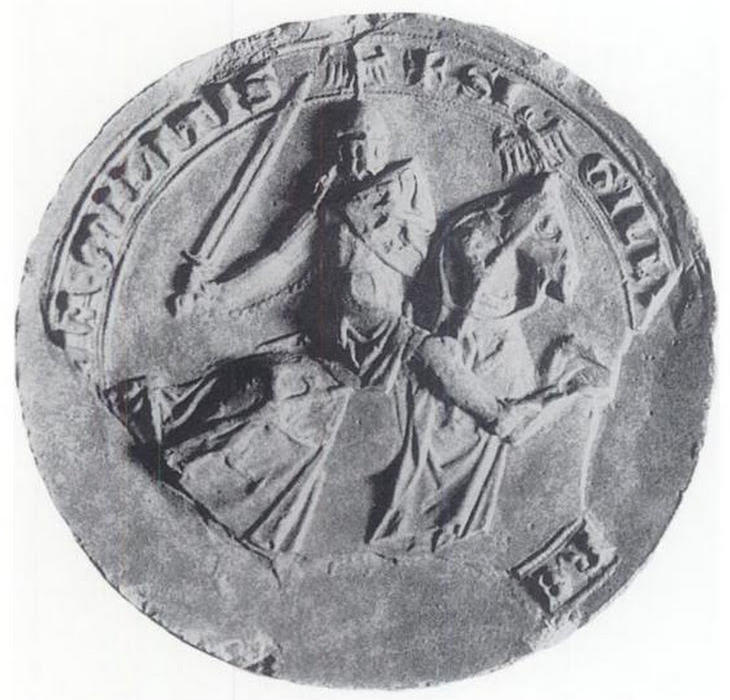Try Amazon Fresh

Try Amazon Audible Premium Plus and Get Up to Two Free Audiobooks
Seal of Florent de Hainault, Latin Prince of Achaia
Morea, Greece

6 Seal of Florent de Hainault (photo: after G. Schlumberger, F. Chalandon, and A. Blanchet, Sigillographie de l'Orient latin, [Paris. 1943], pl. IX.2)
Image source
p.263
In 1204 the Frankish knight Geoffroy de Villehardouin arrived unexpectedly at the southwestern corner of the Peloponnesos.
As Villehardouin’s uncle later noted in his chronicle:
“It happened by chance that the wind carried his ship to the port of Methone [Modon],
where it was so badly damaged that he was obliged to spend the winter in those parts.”1
Within a decade Villehardouin had conquered the Morea. In 1210 Pope
Innocent III referred to him as the prince of Achaia.2
When, in that year, Villehardouin’s wife and son arrived from Champagne,
he installed them in his residence in Kalamata and thereby confirmed his intentions to settle permanently in the region.
Geoffroy’s second son, Guillaume II Villehardouin (1246–78), ruled over most of the Peloponnesos.
But in 1261, as a result of his imprisonment following the battle of Pelagonia, Guillaume was forced to cede to Byzantium the southeastern Morea,
a triangle of land demarcated by the castles of Maïna, Monemvasia, and Mistra (see Map).3
The barony of Geraki was turned over to the Byzantine Empire shortly thereafter.
Although the Latin principality of the Morea survived the death of Guillaume II,
the weak leadership of Italian and Angevin landlords oversaw its decrease in size and power.
By 1430 Latin rule in the region had come to an end.
1 Joinville and Villehardouin, Chronicles of the Crusades, trans. M. R. B. Shaw (New York, 1963), 113.
2 Innocentii III opera omnia: PL 216:221D·
3 D. A. Zakythinos, Le despotat grec de Morée, vol. 1 (Paris, 1932), 15-25;
A. Bon, La Morée franque: Recherches historiques, topographiques et archéologiques sur la principauté d'Achaie (1205-1430) (Paris, 1969), 125-29.
p.268
The personal seal of Florent of Hainault, whose coat of arms decorates the [Nauplion] gatehouse, illustrates the characteristic pose of the Latin knight;
Florent is represented on a galloping horse with his right leg thrust forward in its stirrup, a triangular shield in his left hand, and a drawn sword in his right (Fig. 6).33
33 Schlumberger et al., Sigillographie, 185, pl. IX, 2.
Source: "Art and Identity in the Medieval Morea" by Sharon E. J. Gerstel in The Crusades from the Perspective of Byzantium and the Muslim World edited by Angeliki E. Laiou and Roy Parviz Mottahedeh. Dumbarton Oaks Research Library and Collection, Washington, D.C., 2001
Other 13th Century Illustrations of Costume & Soldiers


